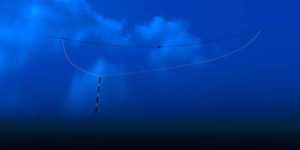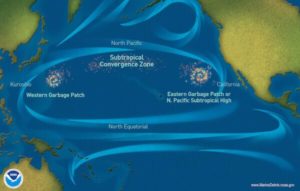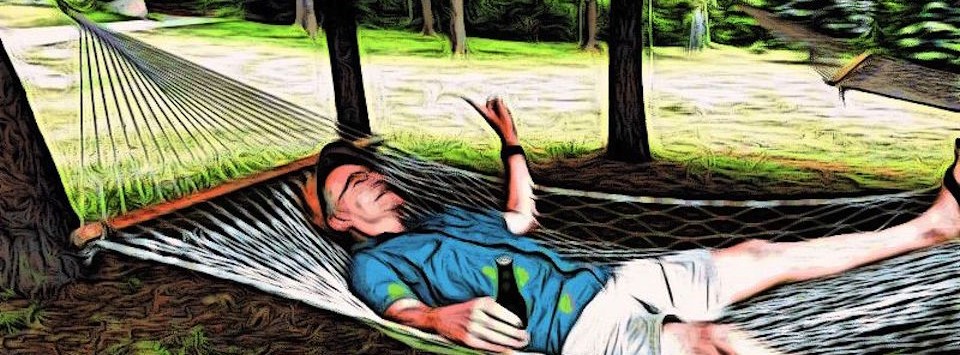Nursery Rhymes Revisited
It’s Never Too Late to Have a Scary Childhood

Have a Great Fall!
Most people don't think about the origins of our nursery rhymes, but it turns out that a lot of them have pretty interesting—or even gruesome—histories.
“Mary had a Little Lamb” was based on a true story: In 1816, Mary Sawyer of Sterling, Massachusetts, had her pet lamb follow her to school. Mary had raised the lamb from infancy, when its mother rejected it. It followed her all over and would come when called. Her brother suggested they bring it to school, and so they did. When the teacher caught them, Mary didn't get in trouble. The teacher just laughed and had them take it home at lunch. A poet witnessed the event and, well, the rest is history.
We commonly think that “Ring around the Rosie” is about the Black Death. “Ashes, ashes, we all fall down” suddenly seems a lot darker in that light. Most scholars, however, disagree, though the Black Death explanation is unlikely to vanish any time soon, given how well it captures the imagination.
“Jack and Jill” is thought to come from King Charles I of England's attempt to reform a tax on liquid goods. Parliament rejected the measure, leading King Charles to lower the volume of a pint, leading to smaller half- and quarter-pints, known respectively as “jacks” and “gills.”
“London Bridge is Falling Down” could refer to a Viking attack in 1014 AD that destroyed the bridge, a child sacrifice (probably not, though it's certainly sensational), or just that bridge’s continual state of poor repair through most of history.
There are claims scrambled about that “Humpty Dumpty” refers to a cannon that fell off a city wall, but it's probably just an invented riddle.
We tend to think that “Mary, Mary, Quite Contrary” refers either to Mary, Queen of Scots or to Queen Mary I of England. Mary I is the more gruesome version. She’s also known as Bloody Mary for her execution of hundreds of Protestants, and the metaphors that we can read into it are pretty grim.
“Pop! Goes the Weasel” is probably just nonsense, though not for the weasel.
_________
Quotable
Yard Ramp Guy, sir—Impressive stuff here:
“I almost had a psychic girlfriend but she left me before we met.”
— Stephen Wright
Supersized Garbage Collection
Patching the Patch

The Deep Blue Sea
Last time around, I took on the Great Pacific Garbage Patch. It's a floating collection of garbage, about the size of the state of Texas and largely composed of floating bits of plastic. The patch is an alarming thing, and I’ve placed it solidly in my “Cautionary Tales” category, which now has 35 entries since I began blogging.
Lest you think I’m all about doom-and-gloom scenarios, I also discover rays of hope in my reading and research. This is one of them:
A young inventor thinks that he's found a solution to the Great Pacific Garbage Patch.
Boyan Slat, born in 1994, (yes, I did say he was young), spent much of his youth near and in the ocean. Time and again, he encountered plastic in the waters. Eventually, he grew really bothered by how pessimistic people were about developing solutions to ocean plastics. And so, in a fine example of youthful idealism balanced by realism, he decided to do something about it himself.
Boyan’s project, The Ocean Cleanup, is developing a large-scale, passive method of removing floating plastic. Essentially, his invention is a large, floating U-shaped pipe that will gather the plastic bits as it drifts.
To ensure that the device collects enough, it will employ a sea anchor—hanging down in the water, increasing drag via an extremely un-hydrodynamic shape— to slow down, so that the plastic flows faster through the gyre than the pipe. This is designed to ensure the plastic runs into—and not under—the capturing pipe.
Naturally, the project has its critics. Most of the plastic in the ocean is made up of particles too small for the system to gather. Quite a bit of plastic ends up on the seafloor, as well. Both of these criticisms, and quite a few of the others, tend to focus on the idea that this project doesn't do enough or is inefficient.
Those are legitimate criticisms, but they also ignore the fact that at least Boyan Slat and his project are doing something. Something is a lot better than nothing. And nothing is about exactly what we've been doing so far to solve this problem.
_________
Quotable
Yard Ramp Guy: Quotations are plentiful. Just look:
“Jazz is a spectacularly accurate model of democracy and a look into our redemptive future possibilities.”
— Ken Burns
The Great Pacific Garbage Patch
Or: Tainted Tuna Tartare

Trash Flow
There's a floating patch of garbage, larger than Texas, in the middle of the Pacific Ocean.
The Pacific Ocean contains huge, slow moving gyre-shaped currents. Debris that drifts into the calm centers of those gyres tend to stay there. It’s similar in some ways to the nearly self-contained gyre that’s the Sargasso Sea but caused by different things.
The debris that drifts into the biggest one, the North Pacific Subtropical Convergence Zone? Bits of plastic.
When you sail into the Great Pacific Garbage Patch, you won't see a lot of chunks of garbage floating around, and you certainly can't walk on it. Instead, the plastic has broken down into tiny particles that float in the upper layers of the water. Fish frequently mistake it for food and often starve, with stomachs full of plastic.
Many other lifeforms find the plastic poisonous, and as the plastics break down, they leak toxic chemicals into the environment, including ones as nasty as PCBs. (Don't read about PCBs unless you really want to freak yourself out, but if you must, click HERE).
There are even bacteria that have learned to eat the plastics, but they end up producing even nastier toxins much of the time.
As the toxic chemicals and plastics are ingested by fish, jellyfish, and other marine animals, they grow increasingly concentrated, up the food chain, as predators eat toxin-laden critters. Many of those predators in turn, like tuna (which are shockingly high up the food chain) contain much higher levels of toxins than the water around them. And then we, the people in this story, eat them. Bon appétit.
The Great Pacific Garbage Patch isn't alone. There is another major gyre in the Pacific, two in the Atlantic, and one in the Indian Ocean. They all contain garbage patches of their own. What are we doing to clean up these patches? Not much yet, other than research, really. There are lots of plans in the air, but not that much funding.
_________
Quotable
Okay, Yard Ramp Guy: Our duel calls for Kalm. May Kooler heads prevail.
“Karate is a form of martial arts in which people who have had years and years of training can, using only their hands and feet, make some of the worst movies in the history of the world.”
— Dave Barry
Parrotfish Prognosis
A Cautionary, er, Tail

Source of Your Sand Castle
Caribbean beaches are beautiful, even by the standards of tropical beaches, which are pretty high to start with. They're also made largely of poop. Parrotfish poop, to be specific.
(Okay, full disclosure: I’m not currently on a beach. I write this on a Sunday morning, in my robe, from my man cave next to the house here in suburbia. I’m safe. And thanks for caring.)
Move past the thought of that, and it’s a fascinating process:
The brilliantly colored parrotfish possesses a hard beak it employs for eating coral. The fish grinds up the coral in that beak to get at algae and other marine microorganisms growing on it, digests the algae, and then poops out the ground-up coral as a fine sand.
Parrotfish produce a LOT of sand, too. A single green humphead parrotfish can produce more than 200 pounds of sand each year. As much as 85% of the sand on many of these beaches is produced by parrotfish.
Watch it in action HERE, if you dare.
People used to think that parrotfish just ate coral for the polyps and were damaging the reefs. It turns out, though, that most parrotfish species go primarily for dead coral, clearing it for new coral to grow. So, they’re providing a sort of public service.
Parrotfish also eat large amounts of sea sponges, which grow faster than coral and can smother young ones. As it turns out, our parrotfish have a largely symbiotic relationship with the corals they eat. And as we learn more and more about the world, we begin to find more and more of these relationships.
It's not just the Caribbean that owes its beaches to parrotfish. The Maldives, the white sand beaches of Hawaii, and other locations around the world do, as well.
Gorgeous white sand beaches in tropical areas around the world are all made of poop. A little gross, I know. Which is exactly why I'm telling everyone: I’m simply trying to clear out a few of you so that my next beach experience is less crowded.
_________
Quotable
So, Yard Ramp Guy: Let's duel.
“Lacrosse is fast paced and I like fast paced games. It's demanding physically and has the hardest conditioning of any sport. You are always running if you are not sprinting. It's constant movement.”





